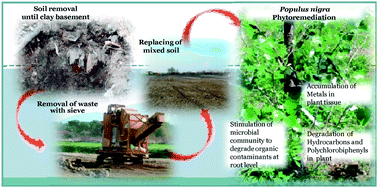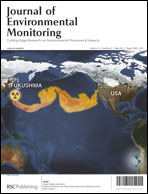In the past several years, industrial and agricultural activities have led to serious environmental pollution, resulting in a large number of contaminated sites. As a result, much recent research activity has focused on the application of bioremediation technologies as an environmentally friendly and economically feasible means for decontamination of polluted soil. In this study horse manure and Populus nigra (var. italica) (HM + P treatment) have been used, at real scale level, as an approach for bioremediation of a soil historically contaminated by metals (Pb, Cr, Cd, Zn, Cu and Ni) and organic contaminants, such as polychlorobiphenyls and petroleum hydrocarbon. After one year, the HM + P phytotreatment was effective in the reclamation of the polluted soil from both organic and inorganic contaminants. A reduction of about 80% in total petroleum hydrocarbon (TPH), and 60% in polychlorobiphenyls (PCBs) and total metals was observed in the HM + P treatment. In contrast, in the horse manure (HM) treatment, used as control, a reduction of only about 30% of TPH was obtained. In order to assess both effectiveness and evolution of the remediation system to a biologically active soil ecosystem, together with the pollution parameters, the parameters describing the evolution of the soil functionality (enzymatic activities and protein SDS-PAGE pattern) were investigated. A stimulation of the metabolic soil processes (increase in dehydrogenase activity) was observed in the HM + P compared to the HM treatment. Finally, preliminary protein SDS-PAGE results have permitted the identification of proteins that have been recovered in the HM + P soil with respect to the HM; this may become a basic tool for improving the biogeochemical status of soil during the decontamination through the identification of microbial populations that are active in soil decontamination.


 Please wait while we load your content...
Please wait while we load your content...